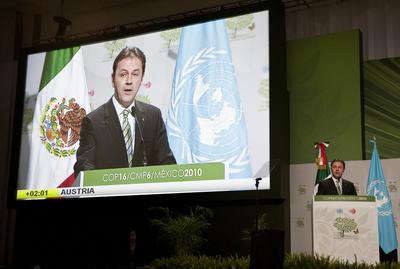Different Parties are interested in progress on different elements of the six-pack, so the total level of progress will be determined by whatever element has the least progress. For example, the United States requires progress on mitigation and transparency in order to support progress on adaptation, finance, technology and REDD+.
There are two tracks to the negotiations: one track is focused on further commitments under the Kyoto Protocol for Annex I parties (which consists of developing countries, but does not include many countries that could be considered ‘developed’ such as Qatar, Saudi Arabia, and Singapore); the other track is focused on implementing the Bali Action Plan, which covers the six-pack described above. Developing countries (including China) have stated that for an agreement they require progress on a second commitment period of the Kyoto Protocol. There could be progress on ‘technical’ aspects of the Kyoto Protocol, including new gases, surplus emission allocations, and accounting for forest management. But Japan has now stated clearly what many have already known – that they do not intend to inscribe their target into the second commitment period. If this issue is not resolved, it could cause any potential deal to unravel.
Below is a summary of the current state of six-pack negotiations:
- On mitigation, key questions are how to anchor pledges that were part of the Copenhagen accord, and what could be done later to increase ambition. Points of contention include how developed country commitments relate to the Kyoto Protocol and the nature of developing country commitments. China has said that it would submit its emission reductions as a binding UN resolution – but this is conditional on progress on a second commitment period to the Kyoto Protocol. Todd Stern has described China’s announcement as nothing new.
- There is some information on transparency in the negotiating text, but the United States wants more detail. The Indian Environment Minister Jayram Ramesh has put forward a proposal, but it is uncertain how much support there is for it from major developing countries.
- On adaptation, there is relatively clean text. But some countries (including Saudi Arabia) want adaptation to be linked to ‘response measures’, which essentially means that as well as assisting countries with adapting to the effects of climate change, oil exporting countries would somehow be compensated for lost fossil fuel revenue.
- On finance, a major point of debate has been the establishment of a fund, which was called for as part of the Copenhagen Accord. Some countries wanted it established at Cancún, but others argue that time is needed to set it up and that it should instead be set up in the period between Cancún and the negotiations next year in Durban, South Africa. Areas of discussion include the transitional committee to set it up, the operating entity of the fund, and its relationship to the World Bank. Australia’s Minister Combet has been involved with consultations on finance.
- On technology, there is clean text, but the United States is likely to block progress if they do not see progress on other issues.
- The text on REDD+ is largely complete, with most of the remaining areas of disagreement (mainly on the role of market mechanisms) expressed as clear options.
The Mexican Foreign minister, Patricia Espinosa, stated on Wednesday December 8 that an ambitious and broad package of decisions is within reach but we no not have it in our grasp. We are now in the final stage of negotiations, where the final political issues need to be resolved, and negotiators may not get much sleep. If nearly 200 countries can come up with an ambitious and broad package of decisions, it will be a major success in diplomacy that could rejuvenate the UN process.
Peter J. Wood is a Postdoctoral Fellow of Resource Management in the Asia-Pacific Program Research School of Pacific and Asian Studies at the ANU, and is currently attending the COP16/CMP6 Conference in Cancún.


Dear Peter,
Thanks for keeping us up to date with a good summary of the issues.
best wishes
Andrew
Could you supply some more important information?
What is the offer from the US on its committment on mitigation? Is there anything on the table from the US? Is or isn’t it that one of the serious obstacles?
After the Copenhagen accord, the US committed to reduce its emissions by 17 percent by 2020. Whether major parties get an agreement on substantial matters will depend on whether a compromise can be reached on Kyoto, ‘anchoring’ developing country actions or commitments, and MRV. There could be not much progress at all, or there could be substantial progress. It is unclear how a US target would fit into any decisions – developed country targets could be contained in an “annex to the decision” or an “information document”. There is a risk that the US will block progress on other areas if they do not perceive that there has been enough progress on mitigation and MRV.
Thank you very much Peter.
It is important to know that the US 17 percent reduction committment.
That committment helps.